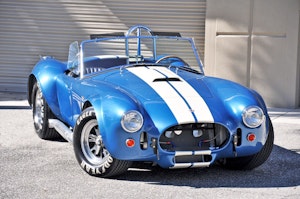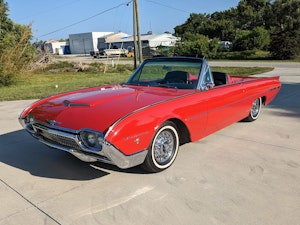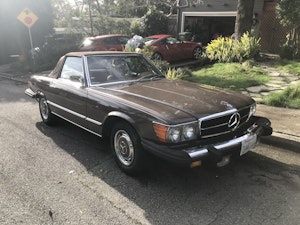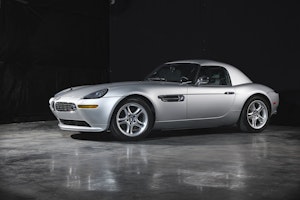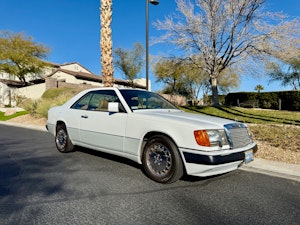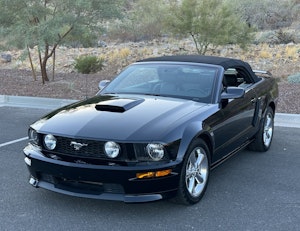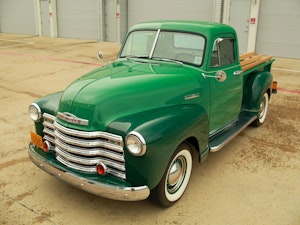Cadillac’s big 1979 mistake and the Seville that never was
Shame on you, Hagerty readers! You’re generally a pretty classy group of people, and spookily well-informed on automotive topics spanning well over a century—but according to the comments about my column last week, a significant percentage of you have no idea what a Cadillac Calais was.
“You mean Cimarron, right?”
“The Calais was an Oldsmobile.”
“There’s a typo… you wrote ‘Cadillac Calais.’”
Boo, hiss. The Cadillac Calais was real, and it was (kinda-sorta) spectacular. Take a leatherette seat for a moment, why don’t you, and let’s discuss. For much of Cadillac’s history, many of its models had a number rather than a name. Once the LaSalle brand vanished into the mists of history, Cadillac released a lower-priced car called the Series 60. It later became Series 65, and Series 62, then finally Series 6200. In 1965, the Cadillac Series 62 was renamed Calais, presumably because having a “62” Caddy in ’65 didn’t sound very impressive.
Marketplace
Buy and sell classics with confidence
Calais was the entry point into the Cadillac brand, and during the early ’70s, it had a brief run of popularity. You had to roll up your own windows and move your seat with muscle power, but it was possible the neighbors wouldn’t notice these mild privations and simply instead be intimidated by your impressive ownership of a driveway-filling 230-inch Caddy coupe or sedan. BMW did something similar with the leatherette-lined 325 in the mid-’80s; the 325 had the low-revving “eta” inline-six of the 325e but the cheaper appointments of the recently-departed 318i. From a distance, it looked like a 325e.
The primary purpose of the Calais was to sell you a Cadillac deVille, which made more money for both manufacturer and dealership. You might come in with the intent of purchasing a roll-up window Calais-pillared sedan—but after a half hour with a smooth-talking, Pierre Cardin-wearing sales superstar, you’d sign for a deVille, no sweat. When the deVille was downsized in 1977, however, the Calais didn’t come along for the ride. Who knows why?
The next entry-level Cadillac to appear was the infamous “J-car” Cimarron, which joined the corporate program just a year before the planned launch, and as a result, had very little to distinguish it from the Cavalier on which it was based. The buyers didn’t like it, to put it mildly. The general-interest media, which had by then largely adopted the new coastal orthodoxy of Honda/Mercedes worship, fell upon the poor little car like cannibals who had just absorbed a double dose of PCP. As is often the case, GM made incremental improvements on a “too-little, too-late” basis. The final Cimarrons were handsome and reasonably swift little cars but nobody was willing to be seen in something that was often described as a “modern Edsel,” so the J-program entered the ’90s without a wreath-and-crest member.
The long decline of Cadillac from the Cimarron’s introduction to the present day needs no recapitulation here. Yet I’ve often thought the firm missed an absolutely critical opportunity right before that car’s introduction. Allow me to explain.
Even if you don’t remember the Cadillac Calais, you probably remember the 1976 Cadillac Seville. This “European-sized” sedan was based on the bones of the Chevrolet Nova. Just how closely it was based on those bones is the kind of thing that can spark a two-hour argument or a furious e-mail, but let’s say for the moment that the Seville and Nova were… relatives. Cousins, maybe. Brothers.
Unlike the Nova, the ’76 Seville looked like a million bucks, which was good because it cost $12,479 in an era where you could get a Fleetwood Brougham for $10K. For just once in the ’70s, GM seemed to get everything right, from the styling to the ride/handling compromise. The only way to get a bad Seville was to order one with the diesel, which was unfortunately done by quite a few people.
The success of the Seville proved that the Cadillac brand could be comfortably attached to a smaller car, and that customers would be enchanted with the result. So when the “X-car” Nova and its GM siblings moved to front-wheel drive as the Chevrolet Citation, Pontiac Phoenix, Oldsmobile Omega, and Buick Skylark, a Cadillac Seville on the same FWD platform should have been a natural step. That wasn’t done. Instead, the Seville became a platform sibling to the longitudinal-engine front-drive Eldorado, complete with a hugely controversial “bustle-back” trunk.
This Seville, too, was a sales success, generating tremendous profit for GM and making a lot of people happy. It now seemed perfectly logical to put the Seville on Cadillac’s high-cost FWD platform. You could argue that it was a better value for the buyers; instead of a Nova in a party dress, you got an Eldorado with four doors. The obvious problem, in retrospect, was a “European-sized” Cadillac was no longer in the showrooms. (Don’t be fooled by the relatively similar dimensions between a 1976 Seville and its 1980 replacement; that’s largely due to the chopped trunk.)

Just as problematic, there was no longer a subtle Cadillac in the showrooms. The Seville had made an impact with skeptics largely because the original design was so understated, but its successor had a strong whiff of pimpmobile to it. It was easy to imagine a buyer trying to decide between, say, a Mercedes 300D and a ‘76 Seville, yet just four years later the Seville had retreated back to the land of crushed velour and fake wire wheels, leaving the sophisticated coastal Caddy intender no viable options.
What should Cadillac have done? It seems obvious now: It should have done an X-body Seville. HERESY! Let me make the pitch for it.
The 1980 X-Body was a brilliantly-engineered automobile and a packaging miracle. Yes, the execution was a little sloppy, particularly with regards to the brakes, but these were spacious and efficient vehicles that represented a quantum leap over their predecessors. There was probably more substantive difference between a ’79 Nova and an ’80 Citation than there was between a ’79 Nova and a ’55 Chevy 210. There was a stout-ish V-6 engine available at launch, along with a reasonably efficient automatic transmission.
Imagine, if you will, taking a 1980 Citation, extending the wheelbase four inches, and adding six or seven inches of overall length. Add better-quality insulation, then finish the interior with power accessories and burnished leather seats. Make it a sedan, like the Buick Skylark, but use the extra room in the dimensions to make it a bit sleeker. Fit it as standard with the F41 suspension. Once the 135-horsepower high-output X-11 powertrain is available, make it standard. You could even bump it out to 3.1 liters, because you know how to do that. Put a fifth gear on the stick shift.
Congratulations! You’ve just invented the Acura 3.2TL, about 25 years ahead of schedule. More critically, you’ve built a Cadillac which is just good enough to keep a lot of your customers out of a BMW or Mercedes showroom. Do you disagree? Do you think the Europeans were infinitely superior to something like that? Test drive an automatic-transmission E28-generation 528e and report back afterwards. The vast majority of contemporary buyers would have preferred FWD traction and quiet comfort in a Cadillac-massaged X-car over an “Autobahn-bred” tail-happy rattletrap with less horsepower than a Citation X-11 of the time.
Yes, it would have been an expensive addition to the X-car program, but it would have paid immediate dividends. Imagine selling 500,000 X-Cadillacs at an additional markup of $5000 per car over a Skylark. That’s 2.5 billion dollars. GM spends that kind of money nowadays to sell 20,000 Bolts a year.
In my dreams, the 1980 X-Cadillac is styled much like the 1976 Seville, with its bluff front, drooping trunk, and elegant roofline. It has individual presence. Plenty of chrome, an optional vinyl roof for the country-club crowd. I don’t see how it wouldn’t have flown out of showrooms, at least until the mid-’80s when cheap gas and economic optimism made the domestic big rigs popular once more. Most importantly, it would have kept another half-million or so buyers from becoming Mercedes or BMW loyalists, thus giving them a chance to age into a Fleetwood or Eldorado.
Oh yeah. You also don’t need a Cimarron in a world where you have an X-Cadillac. That’s a Very Good Thing.
Just two questions left. How do you price it, and what do you call it? I think you price it heads-up with a plain deVille. That sends the premium message, but it doesn’t feel greedy and it doesn’t compromise volume. You market it as a Euro-sized alternative, the same way the ’76 Seville was marketed, but at a more reasonable cost.
The name? Not Seville, because the big Seville did sell a lot of units after it was introduced. My heart says Calais, but I don’t think that would have meant anything to anyone. There’s only one real option. Put on your Mad Men outfits and say it with me. “The 1980 Cadillac Series 60—the right choice for today’s executive on the move. A European-sized motorcar with all-season traction and fine-grained roadholding. Experience the Series 60 at your local dealer today.”
Shame on Cadillac for not doing it. And shame on you, dear reader, for not remembering the Calais. Here’s how you can make this right: Tell all your friends that the “CTS” in “Cadillac CTS” stands for “Calais Touring Sedan.” This is the very definition of an elegant mistruth—and if we all believe it, perhaps it will come true. Oh, who am I kidding? It’s really “Catera Touring Sedan.” Wait? That’s not true? Shame on me, for even suggesting it!

